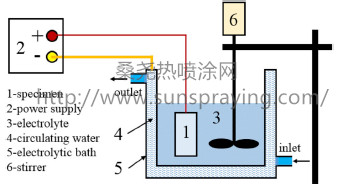The friction coefficients of MAO coatings can be improved by surface sealing and doping. Owing to the porous surface, lubricating agents such as PTFE and paraffin can be applied to cover the surface and seal the holes to reduce the friction coefficient. However, the sealing materials are either consumed or squeezed out from the wear tracks during operation and a second treatment tends to be quite complex. Small particles of the lubricating agents such as diamond-like carbon, graphite, MoS2, graphene, and carbon nanotubes can be added to the electrolyte during MAO to decrease the mean friction coefficient to about 0.3–0.5. Some oxides such as TiO2 and ZrO2 can also be mixed in the electrolyte to improve the wear resistance of MAO coatings. However, the distribution of lubricating particles are normally inhomogeneous in the MAO coatings thereby impacting the service lifetime of the components. In addition, adhesion between the coating and substrate can be compromised by adventitious particles at the interface. Another doping method is to optimize the electrolyte by adding soluble metallic compounds. In this way, metal oxide or salts are formed in situ and incorporated into the MAO coating uniformly but the continuous self-lubricating properties have not been obtained now. Rare earth phosphates such as CePO4 have been shown to increase the machinability of oxide ceramics and excellent slippery ability and potential lubrication have been suggested Micro-arc oxidation (MAO) is a popular coating technology for aluminum alloys, but the wear resistance and friction properties are limited by the intrinsic properties of the alumina coatings with high friction coefficients. In this work, CePO4 is identified as a quasi-2D material by the first principle calculation. As a self-lubricating phase, it is firstly formed in situ during the oxidation process and the lubrication mechanism is investigated. Nano-grains of cerium phosphate are formed and imbedded uniformly in the alumina coatings. With increasing Ce contents, the friction coefficients diminish to 0.1–0.15 during the 5-h test without obvious fluctuation. The results reveal the new concept of using self-lubricating additives in MAO oxide on Al alloys to improve the durability and mechanical properties.

本文由桑尧热喷涂网收集整理。本站文章未经允许不得转载;如欲转载请注明出处,北京桑尧科技开发有限公司网址:http://www.sunspraying.com/
|

